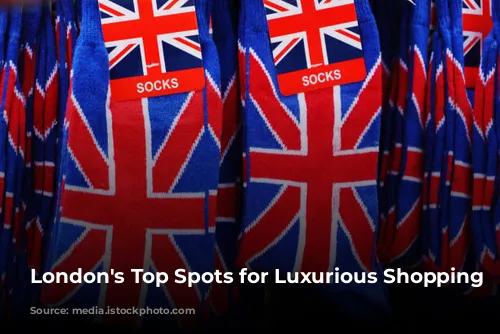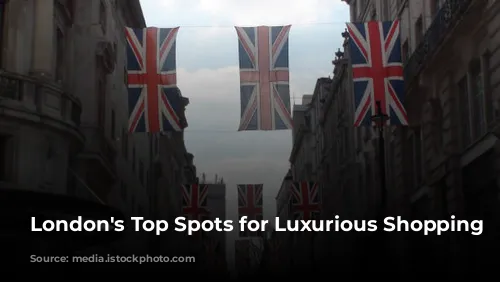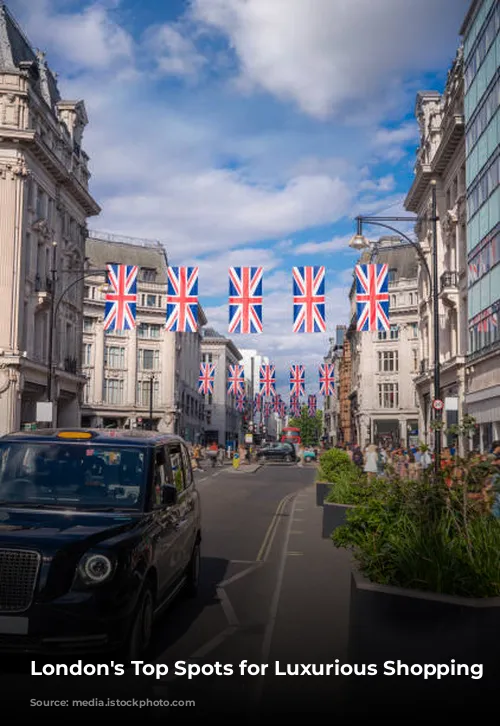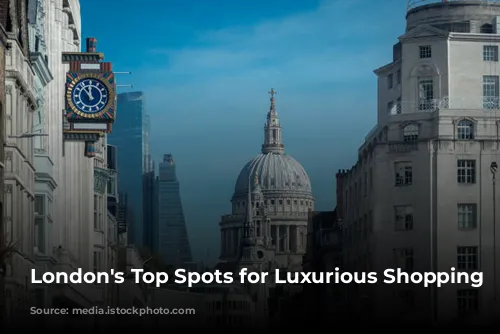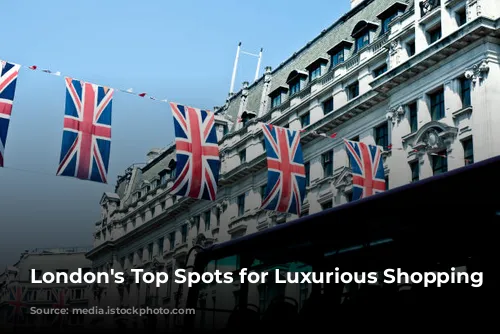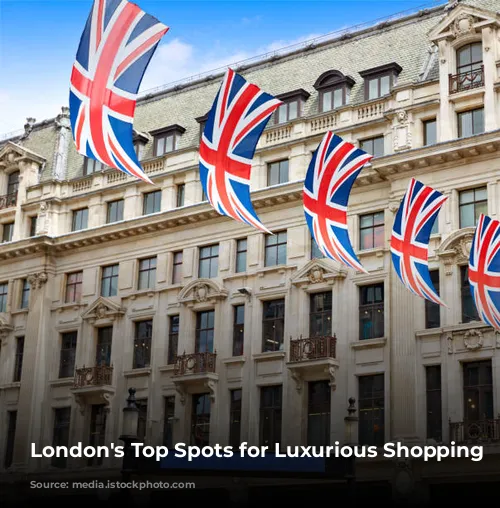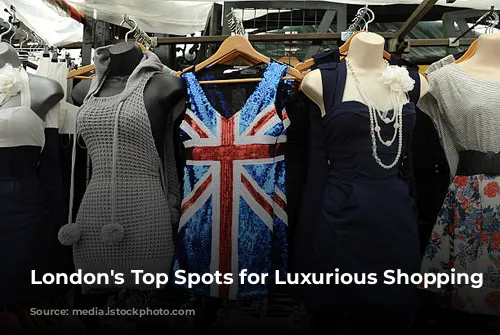London, a global hub for fashion and style, boasts a diverse range of areas that cater to the discerning shopper. Whether you’re seeking designer apparel, exquisite jewelry, or handcrafted suits, London’s luxury shopping havens have something for everyone. Let’s embark on a journey through some of the city’s most prestigious shopping districts.
The Heart of Luxury: Bond Street and Dover Street Market
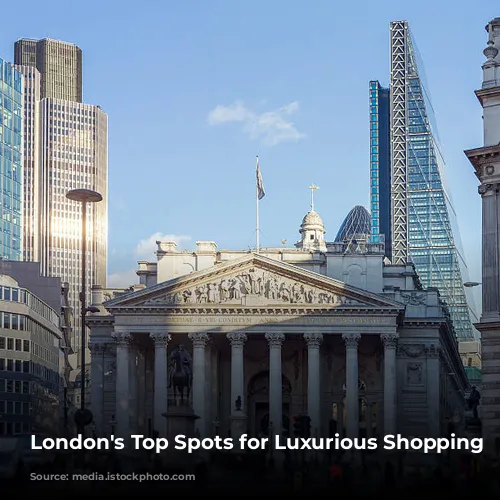
Bond Street: A Timeless Legacy of Luxury
Bond Street, nestled in the West End of London, has been a haven for luxury since the 18th century. This iconic street, split into Old Bond Street and New Bond Street, is renowned for its prestigious fashion retailers, fine jewelers, and exclusive department stores.
It all started in the 1720s, when the area was transformed from fields surrounding Clarendon House into a social and shopping hub for Mayfair’s elite. These early shops and boutiques have maintained their high standing, contributing to Bond Street’s enduring reputation as a fashion hotspot.
Today, Bond Street is home to some of the world’s most prestigious auction houses, like Sotheby’s and Bonhams, and luxury retailers like Fenwick and Tiffany & Co. It’s no surprise that Bond Street has been one of Europe’s most expensive and luxurious shopping destinations, featuring flagship stores for global luxury brands like Ralph Lauren and Cartier. But it’s not just about shopping; Bond Street also boasts artistic elements, like sculptures by Henry Moore and a captivating statue of Winston Churchill and Franklin D. Roosevelt, titled “Allies.”
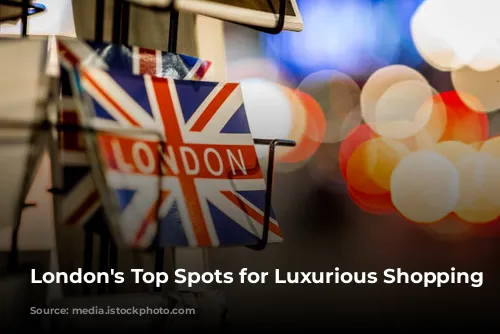
Dover Street Market: A Beautiful Chaos of Style
Dover Street Market, a unique multi-brand retailer that blends department store elements with an exhibition space, is a must-visit for fashion enthusiasts. Founded by Rei Kawakubo of the renowned Japanese fashion label Comme des Garçons and her husband, Adrian Joffe, Dover Street Market opened its doors in 2004 on Dover Street in Mayfair, London.
Initially a small space, Dover Street Market has since expanded to a larger location on Haymarket and has grown to include international locations in New York, Tokyo, Singapore, Beijing, Los Angeles, and Paris. The store is celebrated for its curated blend of high fashion and streetwear, creating a “beautiful chaos” of styles and brands.
Drawing inspiration from Kensington Market, Dover Street Market aims to provide a platform not just for Comme des Garçons but also for other curated brands and designers. The store’s layout is constantly refreshed in collaboration with artists and designers, reflecting its dynamic and innovative approach.
Dover Street Market offers a diverse selection of brands, from high fashion to urban streetwear, including Gucci, JW Anderson, Maison Margiela, Nike, and Supreme. It is known for its special collaborations and has celebrated milestones with exclusive collections from multiple brands. In 2013, Dover Street Market was ranked the #2 best store in the world by Complex, underscoring its significant influence on global fashion retail.
History and Modernity: Bow Lane and Harrods
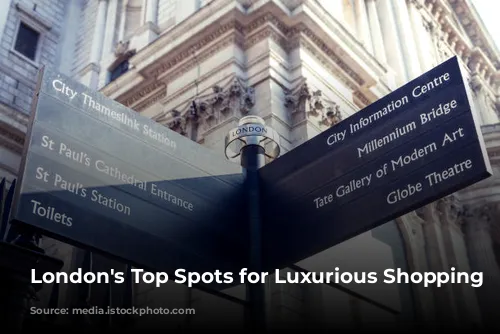
Bow Lane: A Blend of History and Shopping
Bow Lane, situated between St. Paul’s Cathedral and Bank junction in the City of London, is a charming conservation area steeped in history. This lane retains a dense street pattern of lanes, alleys, and courts, creating a unique blend of historical and modern elements.
Historically, Bow Lane and the surrounding area were associated with the sale of luxury goods, making it a key shopping destination in the City of London. Today, it continues to serve as a shopping destination with a variety of retail premises, including small independent shops and high street chains. The pedestrian-friendly environment, combined with the historic setting, enhances the shopping experience.
The area is enhanced by public spaces and architectural elements. Discrete open spaces and courts contribute to the character of the conservation area, with occasional trees and planting adding visual interest. Public realm enhancements in recent years have harmoniously preserved the conservation area’s historical character and appearance.
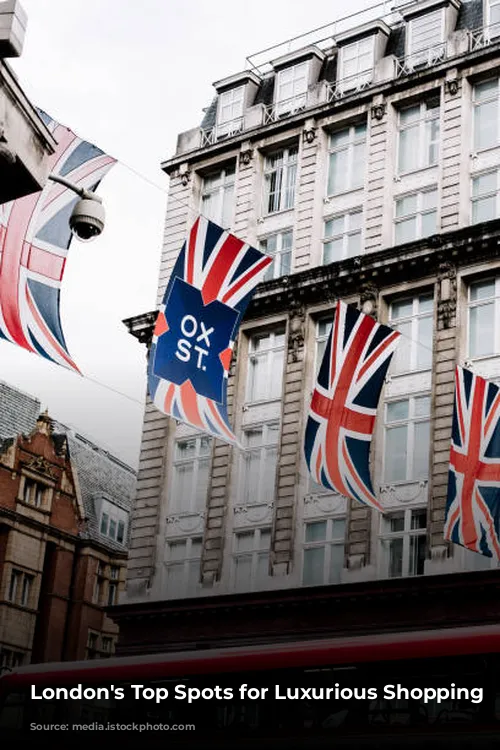
Harrods: A Global Icon of Luxury
Harrods, a world-renowned British luxury department store located on Brompton Road in Knightsbridge, London, is a shopping experience unlike any other. Founded by Charles Henry Harrod in 1849, it has grown to occupy a 5-acre site with over 330 departments covering 1.1 million square feet of retail space, making it one of the largest and most famous department stores globally.
Originally a small shop, Harrods expanded rapidly and now includes a diverse range of services and departments, from high fashion to food halls and luxury goods. It is currently owned by the state of Qatar via its sovereign wealth fund, Qatar Investment Authority.
Harrods has a rich history of serving high-profile clients, including Oscar Wilde, Sigmund Freud, and members of the British Royal Family. Known for its motto “Omnia Omnibus Ubique—All Things for All People, Everywhere,” Harrods offers a wide range of products and personalized services, including 23 restaurants, a bespoke arcade, and a variety of luxury and everyday items. This iconic store is a cultural symbol of London, attracting millions of visitors each year.
From Mod to Mayfair: King’s Road and Mayfair
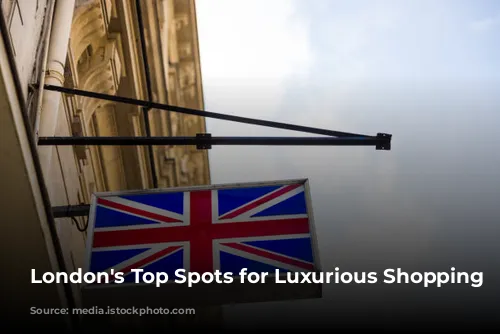
King’s Road: A Journey Through Style
King’s Road, stretching through Chelsea and Fulham in west London, has a rich history intertwined with British royalty and the arts. Originally a private royal road used by King Charles II, it spans nearly two miles, ending at Waterford Road in the west after starting at Sloane Square in the east.
The 1960s saw King’s Road as the epicenter of mod culture, later evolving into a hub for the punk fashion movement, with notable figures like Mary Quant and Vivienne Westwood setting up their boutiques here. The road became synonymous with youth culture and has been featured in countless cultural references, including songs and novels.
Today, King’s Road is considered one of London’s most fashionable shopping streets, offering a blend of high-end shops, boutiques, and eateries. It has maintained its status as a cultural and commercial artery in the heart of Chelsea, reflecting both its rich heritage and contemporary significance.
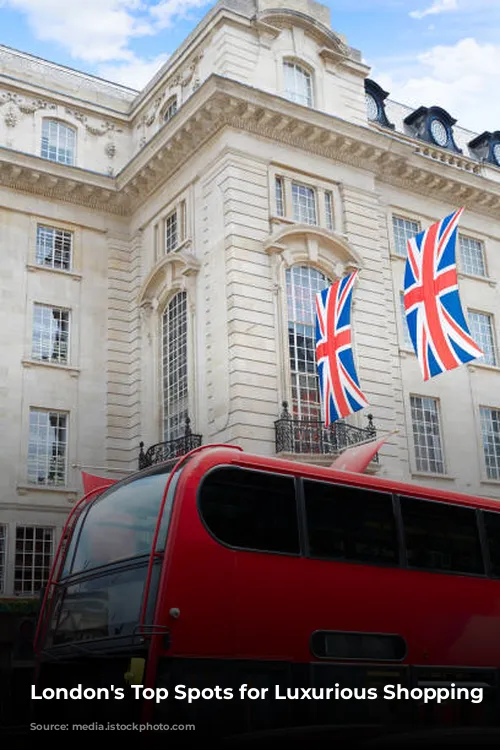
Mayfair: A Luxurious Oasis in the City
Mayfair, one of London’s most prestigious areas, is located in the City of Westminster. This district is bordered by Hyde Park, Oxford Street, Regent Street, and Piccadilly.
Historically, Mayfair was part of the manor of Eia and remained largely rural until the early 18th century. Its development accelerated after the annual May Fair was relocated here in 1686, transforming it into a hub for London’s aristocracy and high society.
Today, Mayfair retains its high-status reputation, known for its luxurious residential properties, upscale boutiques, fine dining restaurants, and prestigious art galleries. It is home to some of London’s most expensive real estate and iconic landmarks, such as Grosvenor Square and Berkeley Square.
Mayfair’s commercial activity revolves around exclusive shopping and dining, with a notable concentration of luxury hotels.
The Royal Exchange: Where Luxury Meets History
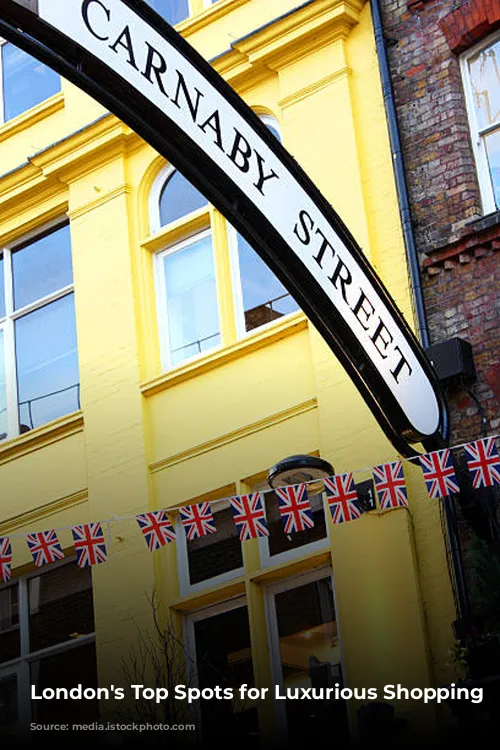
The Royal Exchange: A Historic Gem
The Royal Exchange in London is a historic site originally founded in the 16th century by merchant Sir Thomas Gresham. It was established as a center of commerce for the City of London, designed to emulate the Bourse in Antwerp, which was the world’s first purpose-built bourse.
The current neoclassical building, which stands today, was designed by Sir William Tite and opened in 1844. It has been rebuilt twice after devastating fires. Today, the Royal Exchange houses luxury shops and high-end restaurants, maintaining its role as a commercial hub in the modern era.
Its architectural grandeur includes a portico with Corinthian columns topped by a detailed pediment and a central courtyard where business transactions were traditionally conducted. The building’s design features ornamental ironwork and pediment sculptures that add to its historic and aesthetic value.
The Best of London’s Luxury Shopping
So, where in London should you go for the ultimate luxury shopping experience? For those seeking the most prestigious boutiques and high-end brands, Mayfair and Knightsbridge are the top destinations. Mayfair is home to Bond Street, renowned for its exclusive boutiques and high-end brands. Knightsbridge features the iconic Harrods and Harvey Nichols department stores, offering a range of luxury goods and designer labels.
For a more varied shopping experience, including high street brands and unique finds, Covent Garden and Soho offer numerous options.
The Pinnacle of Luxury: Harrods and The Royal Exchange
Harrods in Knightsbridge is often considered the most prestigious shop in London. Known globally for its high standards, extensive range of luxury products, and exquisite food halls, Harrods is a symbol of opulence and a must-visit destination for those seeking luxury shopping.
The Royal Exchange is regarded as one of the most luxurious malls in London. Located in the heart of the City of London, it combines luxury shopping with architectural grandeur. This historic building houses a carefully curated selection of high-end shops and boutiques, offering everything from designer fashion and jewelry to fine dining experiences.
From the timeless elegance of Bond Street to the dynamic energy of Dover Street Market, London’s luxury shopping scene caters to every taste and preference. Whether you’re seeking iconic department stores, independent boutiques, or historic shopping arcades, London offers an unparalleled journey through the world of luxury.
